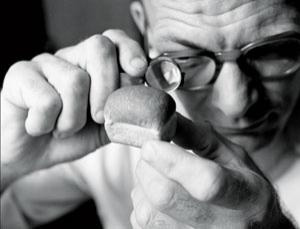
|  |  |  Health & Beauty Health & Beauty  
The Taste of Tiny: Putting Nanofoods on the Menu
 Emma Davies - New Scientist Emma Davies - New Scientist
go to original


| | It's a small food revolution (Hulton Archive/Getty) |  |
Nothing says summer holidays quite like ice cream. On a hot afternoon by the sea, there's little to beat the simple pleasure of a cooling scoop of your favourite flavour. Can food get much more satisfying than this?

Vic Morris thinks it can, with the help of nanotechnology. He is part of a team tweaking foods to trick the body into feeling pleasantly full long after the final mouthful - and without overeating.

Ice cream that makes you feel full could be just the beginning. Nanotechnology promises even saltier-tasting salt, less fattening fat, and to boost the nutritional value of everyday products. Nanofood supplements could even tackle global malnutrition.

So what is a nanofood? It isn't just about nanoparticles. Many foods have a natural nanostructure - the proteins in milk form nanoscale clusters, for example - that can be altered on the nanoscale to enhance their properties.

In fact, researchers have been changing the nanostructure of food for years, for example by adding emulsifiers to improve the texture of ice cream. It's the emergence of technologies such as atomic force microscopy that has changed the game by finally opening a window on the nanoworld. Rather than working blind, Morris can now take a close look at the tiny structures he works on, understand their behaviour and then make changes in a more rational and deliberate way.

Emma Davies is a science writer based in Hertfordshire, UK

Read full article here |

 |
|  |



